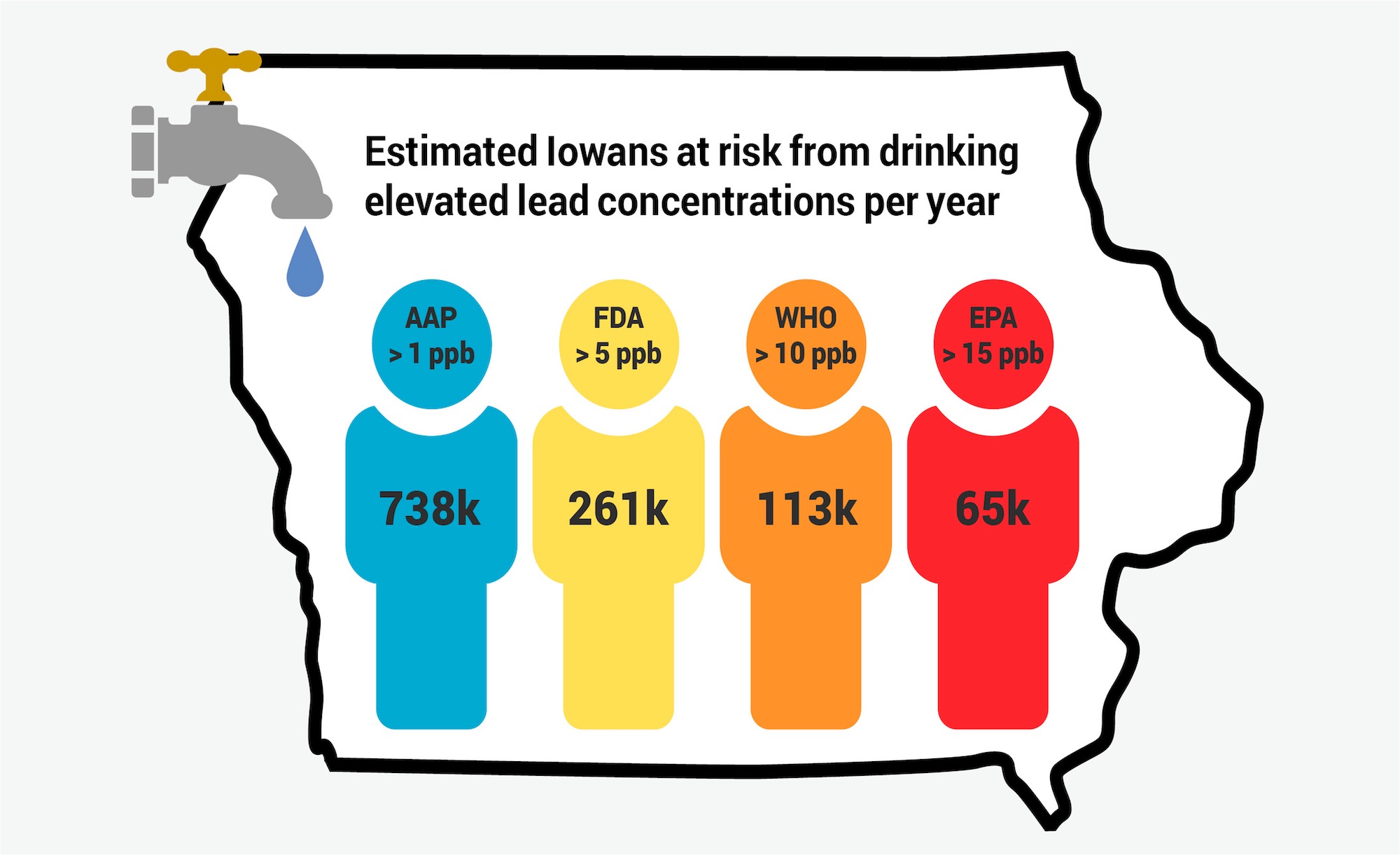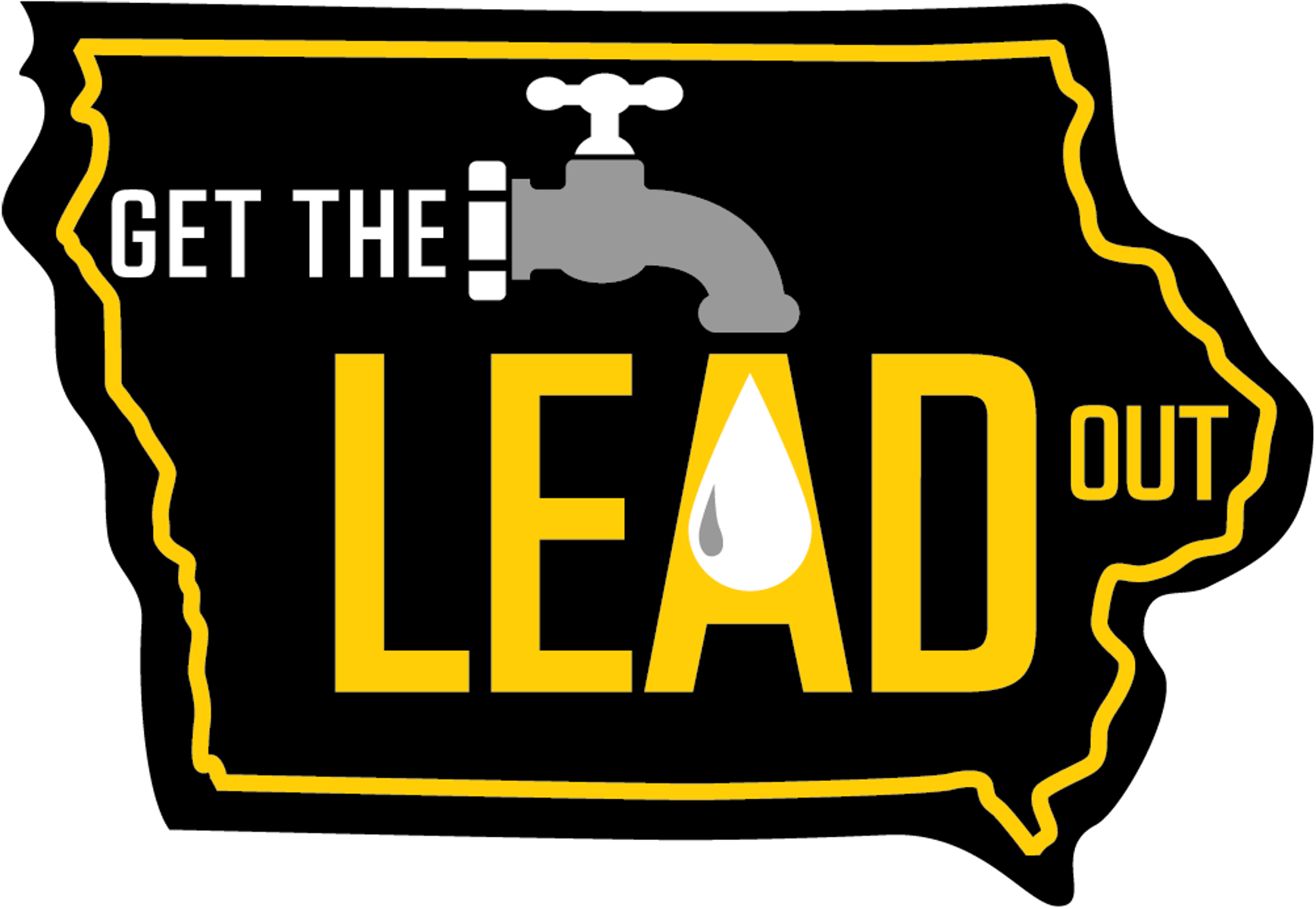How does lead impact health?

Lead is a toxic metal that is harmful to human health. Lead is carried in the bloodstream and can harm the nervous system and brain. Lead that does not leave the body through excretion is absorbed into the bones, teeth, and organs— where it can collect for a lifetime. Young children are especially vulnerable to lead exposure because their bodies absorb metals faster than the average adult. Children’s nervous systems are still developing, so they are more vulnerable to damage from toxic metals like lead. Pregnant and nursing mothers should also be aware of how harmful lead exposure is to nursing infants and developing fetuses of pregnant women.
How many Iowans are exposed to lead in drinking water?
We estimate how many Iowans may be exposed to lead in drinking water by analyzing the 166,654 first draw lead samples taken for Lead Copper Rule compliance from January 1st, 1991, to December 31st, 2019.
We mined this data from Drinking Water Watch, a publicly accessible database for federal lead testing.
You can see a steep increase in people exposed to different lead levels, where it doubles for people exposed to 10 ppb at 113,000 people.
For 5 pbb, the estimated popluation rises to 261,000 people exposed.
The estimate rises to over a quarter of people on public water, 738,000 people, exposed to lead levels above 1 ppb.

We estimate between about 50,000 and 80,000 peoplde are exposed to elevated lead concentrations in Iowa every year.
Interested in the full study? Click here.


